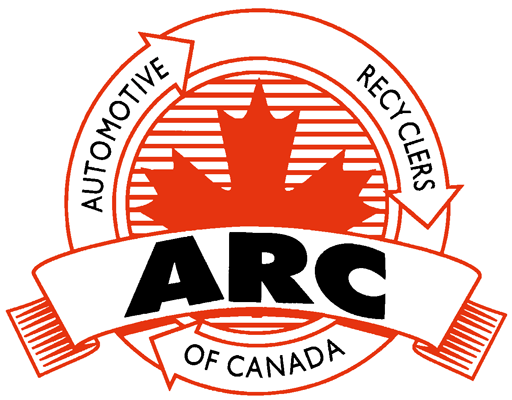Sales is a mental and emotional profession. It can have highs and lows all in a matter of minutes. You have to be mentally prepared to have an effective day. You need to have a mindset that is focused on the desired outcome. Seek a win-win outcome. You help a customer with a part they need, earn a good living, and feel great about what you donnA Highly Paid Professional PositionnnStatistics show that the sales profession is one of the highest paid positions in all industries. The most successful and well-paid sales people view their position, as would any professional. It is their chosen career and they want to be very good at what they do. It is more than just a JOB – by the way I define a JOB as “Just Over Broke”. People who have a job live from paycheck to paycheck and really have very little control over where life is taking them.nnProfessionals prepare themselves for each day as well as for the long term. There are many ways to do this, but I find the best way is to listen to “Game Tape”. Listen to a recording of yourself doing a sales call. Then self correct and practice what you want to say given a similar call. I also recommend reading books and attending sales training. Remember if it is your future then it is your responsibilitynnKnown or UnknownnnWhen dealing with any sales call the known or unknown factor has a significant impact on the outcome. It goes to this question: Do you have a good, bad or no history at all with the caller? Is your history one that says that you can be:nn· Trusted, andnn· BelievednnThese two aspects determine how primed the customer is to buy.nnBuild Trust in 2 MinutesnnThe average phone calls last about 2 minutes. Your history is your history.nnBut to get the sale you must ASK for the sale. Only 20% of sales people are naturally good at asking for the sale. But, customers are 5 times more likely to commit if they are asked. You have to have what I call the “ASK Mindset.”nn1. I know what I wantnn2. I set my mind to that outcomenn3. I create a favorable scenarionn4. I practicenna. Use their namennb. Get the informationnnc. Overcome objectionsnnd. Add value (How this going to help?)nnBuild or Add to the RelationshipnnAsk for their name and use it – every time. This helps build a rapport and how quickly you establish a rapport is:nn· How quickly you establish a relationshipnn· How quickly or how likely you are to get a commitmentnnYou have to provide enough information relevant to the customers needs. The content and how it is received depends on relationship.nnThe Phone RingsnnThe phone rings because someone needs a part. If we prepared ourselves for the desired outcome then our goal in answering the phone is trying to match the part that best fits the customer’s problem. Then our job becomes one of understanding the dynamics of the problem to be fixed. Problem dynamics such as:nn· Partn· Budgetn· Timen· Qualityn· ColornnWe do this by collecting Intel – the information needed to solve the problem. This helps you stay in control of the conversation.nnProvide OptionsnnThe greater the dollar amount of the purchase and/or the familiarity with you or the parts you sell increases the need for options. Options can be mileage, warranty, damage, OE surplus, remanufactured or new aftermarket. Providing options especially with price differences and warranty differences creates value and decreases procrastination and the fear of making the wrong decision. All key to getting the YES you want.nnThe “Ask Mindset” – You have been asking questions since you picked up the phone. Asking questions focuses on combating the human instincts of:nn· Procrastinating – When customers are unsure they will default to making the decision at a later time.nn· Fear of Making the Wrong Decision – The less familiar (with you or with the industry) the higher the fear factor will be. We ask questions and provide answers to help alleviate this fear. Your confidence can often inspire confidence in the customer.nnThe CLOSE: Trial ClosennTrial Close method of Closing is based on the idea that it is easier for customers to make decisions on minor points. It also allows you to take the temperature of the customer – hot, warm or cold. If you can get 4 to 5 yes responses in a row its basically a done deal.nnPay attention to the mood & tone of the customer – you want to sell at the emotional peaks.nnTrial closing lets you read the emotional temperature. If there is a “no” in the sequence, you must rebuild the momentum. You can do this by reviewing the progress you had before. This gives you and the customer confidence to move to the close.nnTHE CLOSE nnWe’ve been doing it all along. Everything we do from the start of the interaction should be geared toward closing a salennEstablish a Close Question – Should include more than 1 affirmative choice:nn· Would you like that with a 1-year parts and labor warranty or the part by itself?nn· I can get you the one with a few more miles with a 1-year parts warranty and labor for about the same price as the lower mileage one. Both are good options, which one do you want?nnChoices alleviate pressure and give the illusion of control to the customer. Practice so your pitch is fluid and confident.nnFirst to Talk Takes The Goods – SHUT UP! You cannot induce action if you answer your own questions. Do not let the customer off the hook. Good or Bad we want a clear answer. YES, it’s a sale. No or if there is an objection we get one more shot to change their mind.nnBy Robert Counts and Chad Counts
